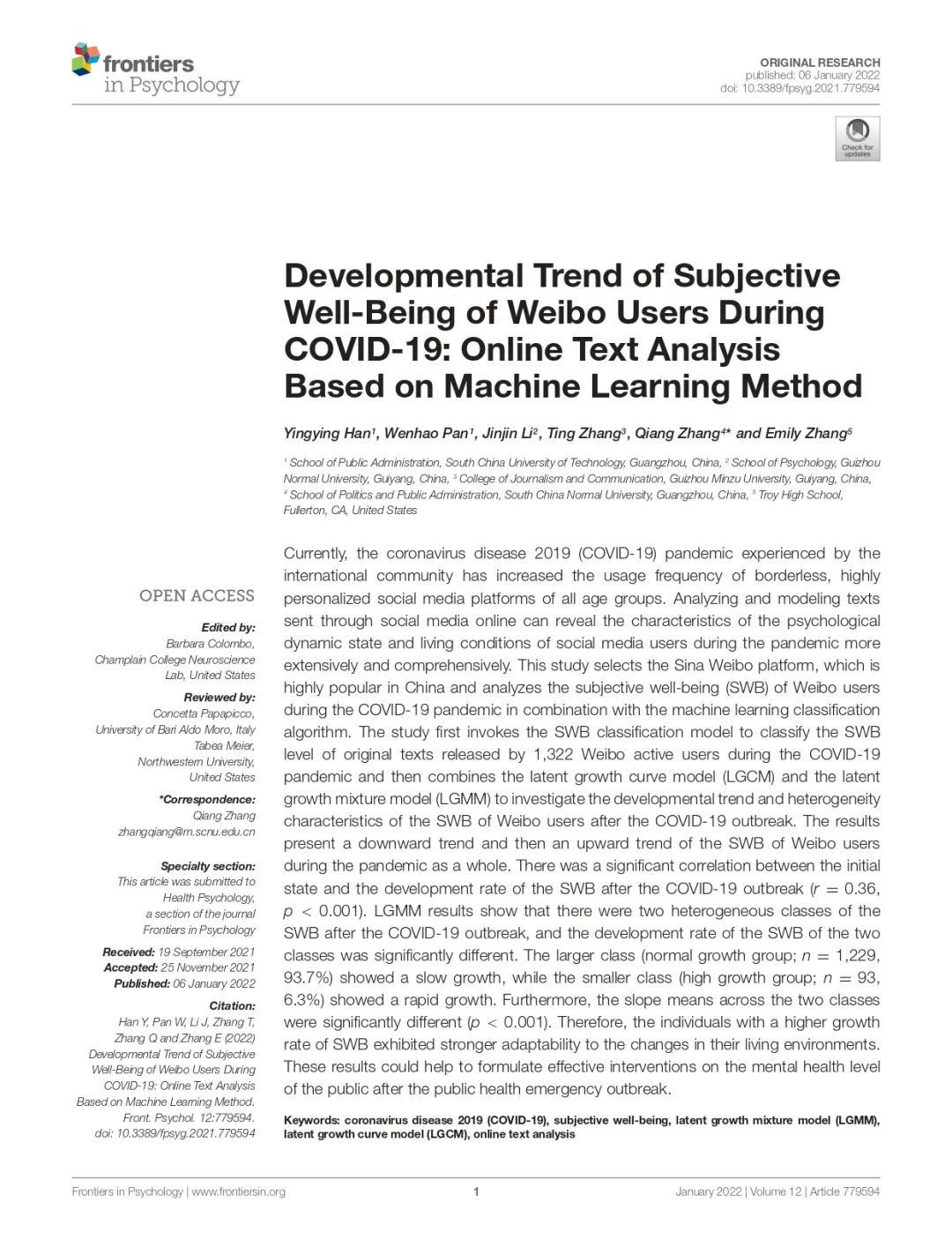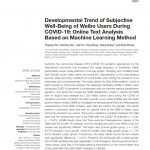分享一篇最近发表的文章
Developmental Trend of Subjective Well-Being of Weibo Users During COVID-19: Online Text Analysis Based on Machine Learning Method
Currently, the coronavirus disease 2019 (COVID-19) pandemic experienced by the international community has increased the usage frequency of borderless, highly personalized social media platforms of all age groups. Analyzing and modeling texts sent through social media online can reveal the characteristics of the psychological dynamic state and living conditions of social media users during the pandemic more extensively and comprehensively. This study selects the Sina Weibo platform, which is highly popular in China and analyzes the subjective well-being (SWB) of Weibo users during the COVID-19 pandemic in combination with the machine learning classification algorithm. The study first invokes the SWB classification model to classify the SWB level of original texts released by 1,322 Weibo active users during the COVID-19 pandemic and then combines the latent growth curve model (LGCM) and the latent growth mixture model (LGMM) to investigate the developmental trend and heterogeneity characteristics of the SWB of Weibo users after the COVID-19 outbreak. The results present a downward trend and then an upward trend of the SWB of Weibo users during the pandemic as a whole. There was a significant correlation between the initial state and the development rate of the SWB after the COVID-19 outbreak (r = 0.36, p < 0.001). LGMM results show that there were two heterogeneous classes of the SWB after the COVID-19 outbreak, and the development rate of the SWB of the two classes was significantly different. The larger class (normal growth group; n = 1,229, 93.7%) showed a slow growth, while the smaller class (high growth group; n = 93, 6.3%) showed a rapid growth. Furthermore, the slope means across the two classes were significantly different (p < 0.001). Therefore, the individuals with a higher growth rate of SWB exhibited stronger adaptability to the changes in their living environments. These results could help to formulate effective interventions on the mental health level of the public after the public health emergency outbreak.
引用格式:
作者信息:
原文链接:
https://doi.org/10.3389/fpsyg.2021.779594



第一,人生故事分享

第二,个人近况分享

第三,匿名故事分享

第四,计算机知识分享

第五,心理学知识分享

第六,旅游知识分享

第N 。。。。。。。。。










 湘公网安备 43010202000590号
湘公网安备 43010202000590号